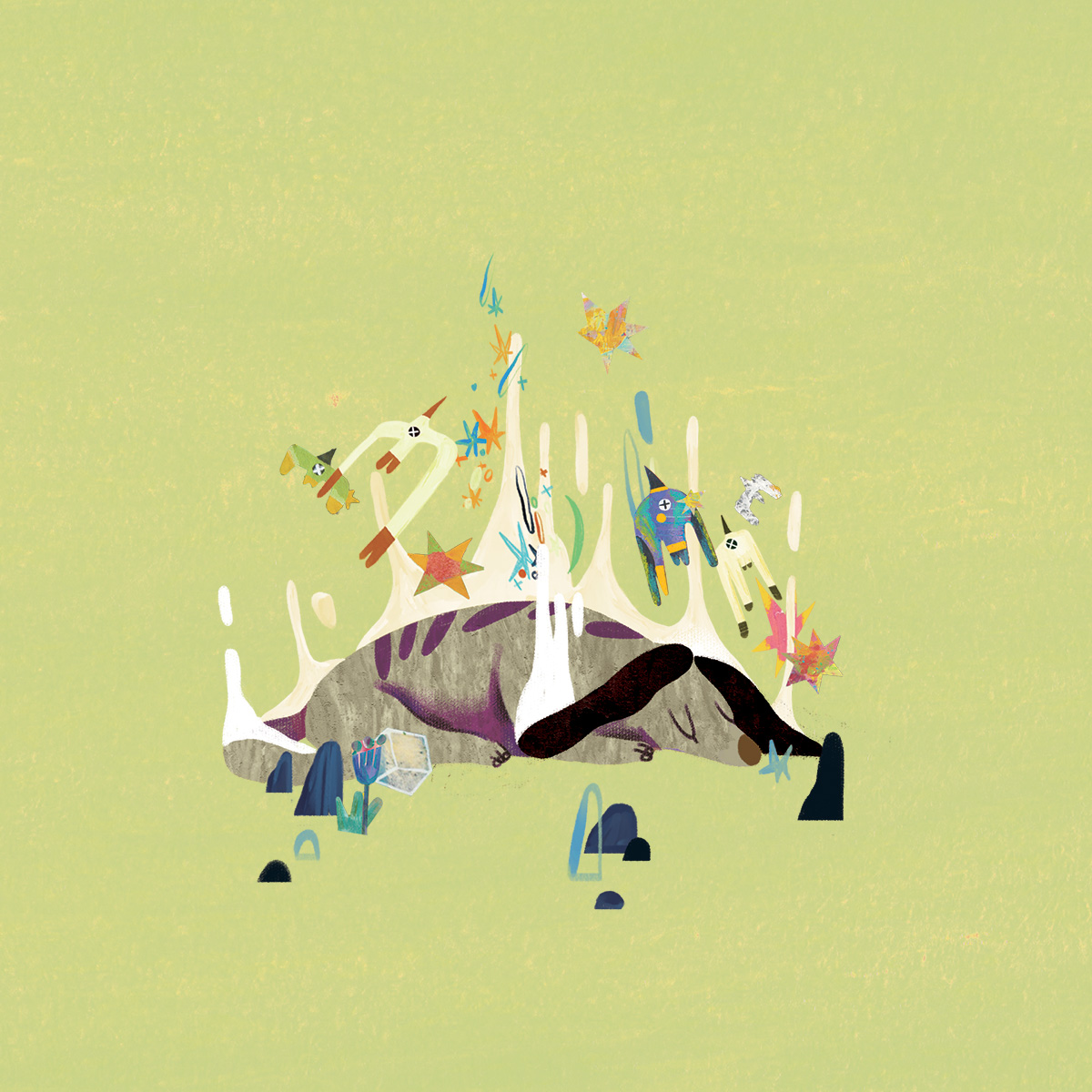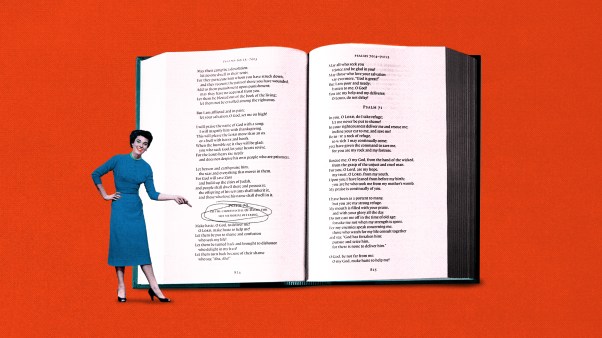My Labrador retriever Buffy had a big heart. Our veterinarian, Beth, told us that Buffy had the largest, slowest “athlete’s heart” of any dog she had seen in 20 years of practice.
Buffy inherited her athletic heart from her grandmother, a dog that won numerous national field trial championships. In field trials, dogs must be eager, fast, and acutely alert to hand signals. They must also be able to keep going at full speed when most dogs begin to flag. That was Buffy. I never trained her for field trials, but we did retrieving drills almost every day with a bright orange “dummy.” Unlike Blue, her sister from another litter, Buffy never showed even the slightest sign that she was ready to stop retrieving. She just kept going.
The day before Buffy died at the age of 16, she was lying half awake on the living room floor and needed to go outside. Out of habit, I picked up the dummy. I was surprised when she abruptly perked up, struggled to her feet, shook once, and looked up at me expectantly. I could not believe that Buffy still wanted to retrieve.
Outside on the front lawn, I tossed the dummy a short distance. Buffy ambled after it, picked it up, and brought it back. Her eyes and ears said, Throw it again! So I did. She brought the dummy back, but this time she dropped it and, with a heavy breath, lay down. Buffy finally stopped retrieving.
Despite Buffy’s suffering in her old age, she lived a long and full life compared to many dogs. From the time they are born, dogs face dangers that can cut their lives short. They must be vaccinated for rabies and are besieged by hordes of micropredators, such as ticks, fleas, biting flies, mosquitoes—and the horrifying heartworm.
When a mosquito takes blood from an infected animal, it swallows microscopic larvae, which then grow in its digestive tract until finally breaking out into the mouthparts. When the mosquito feeds again, larvae are left embedded in the host’s skin, growing until they move into the bloodstream and are transported to the lungs and heart.
Growing up to seven inches long and tangled together in a squirming, spaghetti-like mass, the worms feast on the dog’s organs. By the time symptoms manifest—entomologist Wayne J. Crans lists “loss of body weight, dropsy, chronic cough, shortness of breath, muscular weakness, disturbances of vision, chronic heart failure”—death is all but certain.
Modern science tells us that heartworm is just one source of animal suffering in nature among scores of others. Together, they confront Christians with a disquieting question: How could such horrific suffering exist within the good creation of the omnipotent, omniscient, and morally perfect Christian God? How to answer this question has become the center of intense controversy among leading Christian and non-Christian thinkers of our time.
I
t was not always so. Premodern Christian theologians did not find this question hard to answer. Most major Christian thinkers taught that the causes in nature that harm human and nonhuman beings did not exist until the first human beings sinned against God. Predation, disease, deadly parasites (like heartworm), and violent terrestrial events were viewed as products of the Fall (Gen. 2–3). But revolutionary new developments in the natural sciences have made it difficult to accept that traditional answer.
More unsettling still, awareness of animal suffering has made it hard for many people to believe that the Christian God exists at all. In Nature Red in Tooth and Claw, Michael Murray explains that animal suffering has been a key lever of atheism since the 19th century. Research indicates that two of the three top reasons for the growth of atheism today involve evil and suffering. Only in recent years has the subject of animal suffering been broached by Christian scholars and apologists.
It seems that our heartworm poses deadly danger not only to dogs. It endangers the heart of the Christian faith itself. How do leading Christian thinkers respond, if not with an appeal to the Fall?
In the premodern past, Christian theologians and philosophers generally doubted that animals had the mental capacity to suffer in a subjectively conscious, morally significant sense. In modern times, some notable Christian apologists such as C. S. Lewis and William Lane Craig have adopted this view of animal minds in order to downplay the problem that animal pain poses to faith. For if animals are not aware of their pain, then there is no problem of animal suffering to solve.
There are some philosophical and scientific reasons for at least considering that the appearance of animal suffering is illusory. However, critics contend that the evidence offered for such skepticism cannot override the strength of those appearances. Further still, emerging branches of animal science strongly support the common-sense belief that animal suffering is all too real. In 2009, a committee of 13 scholars representing the prestigious National Academies concluded in their 180-page publication Recognition and Alleviation of Pain in Laboratory Animals that “Current scientific evidence strongly suggests that mammals, including rodents … are able to experience pain.”
Their findings are being accepted by all sorts of agencies to regulate the ethical and lawful treatment of animals and are revolutionizing the ethics of animal care and use in Western societies. This changed perspective stands in the way of continuing common practices in factory farming or laboratory experimentation, for instance, that discount the moral importance of inflicting pain on animals as a means to human goods.
But for the Christian, the question remains: What justifying moral reason could God possibly have for authorizing the animal suffering so very widespread in nature—“red in tooth and claw,” as Alfred, Lord Tennyson first put it? And, according to a good many Christian and secular contemporary thinkers, a second scientific development makes giving a credible answer all but impossible.
In the 18th and 19th centuries, pioneering geologists made an unexpected discovery that still causes consternation among Christians. The unveiling of an unfathomably long epochal, prehuman history of animals calls the chronology of creation in Genesis into question. More importantly, though, it seems to subvert the traditional explanation that savagery among animals originated as a consequence of the Fall.
According to ancient rocks and fossils, predation and other sources of animal pain reach back seamlessly throughout the entire prehuman history of species as they gradually evolved. Recent studies of amber from the Cretaceous period (150–70 million years ago) provide perfectly preserved specimens of biting flies, ticks, mosquitoes, a host of parasitic worms (ancestors of the heartworm), microbial diseases, and viruses that preyed upon the dinosaurs, afflicting them with horrific physical harm that possibly hastened their demise.
The additional discovery that successive cataclysmic mass extinctions of entire biomes of species have occurred periodically on Earth further complicates Christian explanation for animal pain. It seems that 99 percent of all species that ever existed are now gone, most without so much as a genetic trace left in the genomes of species existing now. On the surface, this sequence of catastrophes, followed by evolutionary restarts, does not exactly evoke a sense of divine providential design.
A third development in science makes it still harder to discern the Divine in both the history of animals and the conditions of their existence in nature now. In 1859, Charles Darwin published his bombshell hypothesis of natural selection in On the Origin of Species. The core idea is that when animals acquire new traits that enable them to adapt to their environments, those traits are passed on to offspring. Accordingly, then, during hundreds of millions of years, the law of natural selection guided the creation of all species.
It is this relatively random, uneconomical, and inherently brutal means of creation that causes intense animal suffering. The lawlike “hand” of natural selection literally inscribes animal suffering by design into the conditions of existence for animals. Since Darwin’s time, philosophers and theologians have debated whether the God of the Bible could have employed such an inherently inefficient and brutal means of creation.
How are we to respond? Many Christians agree with their atheistic counterparts that Christianity and Darwinism cannot both be true and therefore reject evolution (though studies show that the majority of Christians are increasingly accepting varying levels of theistic evolution). Christians who do accept evolutionary science must somehow reconcile its account of animal suffering with belief in God.
The majority of Christian thinkers who affirm Darwinism defend what I refer to as “only-way” explanations. The core proposal is that theistic evolution was the only way for God—even an omnipotent God—to create a sufficiently valuable world. Animal suffering is justified morally, then, because it will inevitably exist as the byproduct of any very valuable world that God could create. The “only-way” thesis invites predictable skepticism. Could an omnipotent and omniscient God really be powerless to create a valuable world without also causing a vast vista of suffering and death?
The strongest argument in this viewpoint is that theistic evolution provides the only way to produce certain valuable goods that counteract and outweigh evolutionary evils. There are goods that likely would not be possible in a non-evolutionary universe created quickly by divine command: cosmic autonomy and deep beauty, authentic human personhood, genuine moral freedom, discovery of truth through inquiry, and the possibility of real personal growth and maturation (soul-making), in part through suffering.
These great evolutionary goods should reduce atheistic arguments, at least to an extent. Nevertheless, critics of the approach (including me) still doubt that God was incapable of producing comparable goods without also giving natural selection freedom to cause so much harm to innocent creatures. Was the violent extinction of the dinosaurs really necessary? Are creatures like the heartworm really inevitable in all possible valuable worlds?
As we grapple with the problem of animal suffering, it is worth considering a second approach that does not require seeing God as limited in this “only-way” fashion. Supporters of this approach appeal to the aesthetic concepts, properties, and values of great art.
What if we were to picture God as a cosmic artist acting according to artistic norms rather than as a person in executive authority acting along ethical lines? This shift to an aesthetic picture changes our understanding of the moral position that we imagine God is in when deciding to allow evils.
A key tenet of ethics is that a morally good person in a position of executive authority and power must always minimize evil so far as possible. One allows it only when absolutely necessary, such as when it is the only way to realize particular goods or to prevent particularly bad evils.
In contrast, we view artists as rightfully free to maximize goodness (beauty) even when doing so requires including evil (ugliness). Artists are justified in allowing the evil (ugliness) if they successfully integrate it into a beautiful whole that could not be as beautiful as it is without the evil. Roderick Chisholm, a prominent analytical philosopher, referred to this common artistic technique as the defeat of evil.
The importance of this shift away from a narrowly ethical picture to this sort of aesthetic analogy is immense, for it removes the need for an “only-way” explanation of animal suffering. It opens the possibility that God was not coerced by circumstances into causing animal suffering but instead employed divine artistic discretion in deciding to do so. To be justified in doing so, God would need to have the sure aim of defeating the evil, in Chisholm’s sense.
Some Christian thinkers maintain that God already has defeated evolutionary evil by means of morally valuable beauty. They often follow Alfred North Whitehead (1861–1947), who proposed that the clashing conflicts in the natural realm create “deep beauty” that could not exist without them. A natural realm consisting only of harmony, balance, symmetry, and perfect order as a whole could produce only prettiness or loveliness, forms of beauty without depth.
Others cite the “fierce beauty” created by suffering and violence in nature. Still others cite the valuable “sad beauty” of transience and death inscribed into nature’s design. These writers commonly appeal to Aristotle, who praised tragedy as a literary genre for its power to elicit virtuous emotions such as compassion, indignation at injustice, and desire to live a just moral life.
These valuable aesthetic goods do partly defeat Darwinian evil. They make evolutionary creation considerably more plausible for Christians than previously supposed. Unfortunately, though, these great cosmic, moral, and aesthetic goods do little if anything for the countless victims of evolution’s evils. Are those billions of valuable creatures little more than instrumental means to ends enjoyed by a few remaining species (under 1 percent), including, especially, human beings? I concur with others who find it unlikely that God attaches so little inherent worth to those animals. Can Christians somehow forge a more acceptable aesthetic explanation?
Numerous biblical writings support the analogy of God as artist with the creation as a work of cosmic art. Less obviously, though, God’s connected acts of redemption in Scripture also take shape in an aesthetically important fashion—what we might call God’s “messianic art.” Hans Urs von Balthasar wrote volumes on the distinctive form of beauty—the glory—generated by God’s redemptive actions, especially in the Crucifixion, which defiantly “embraces the most abysmal ugliness of sin and hell … into that divine art for which there is no human analogue.”
There is, however, a partial human analogue. This messianic art fits to an extent with the genre of tragedy, for it incorporates tragic evils and horrors that seem to extinguish all meaning for the lives of victims. In Christ’s suffering, writes Balthasar, ordinary tragic sensibility is “inflamed by the most sublime of beauties—a beauty crowned with thorns and crucified.” In this messianic genre, unlike in its Greek and Shakespearean counterparts, tragic evils do not have the last word on the victims, for in the end God defeats them.
Two biblical sources can help to resolve apparent conflict between the Christian story of redemption and the story of species. First, the apostle Paul’s famous discourse on divine election in Romans 9–11 is unexpectedly useful. Interpreters rarely notice that the discussion on election follows immediately after Paul’s imagery of the whole creation “groaning” in labor pains, longing to be rescued from evil (8:18–23). Surely violent predation, disorder, and death among animals are part of the picture Paul has in mind.
Since Darwin’s time, philosophers and theologians have debated whether the God of the Bible could have employed such an inherently inefficient and brutal means of creation.
But in the discourse on divine election, Paul addresses an accusation that fellow Jewish opponents lodged against the Christian gospel. The heart of the objection apparently was that this gospel of a crucified “Christ,” or Messiah, had the absurd implication that God had made it impossible for Jews to recognize and embrace the Christ when he finally came. In this way God would have done something utterly self-defeating and unjust toward God’s very own people.
Surprisingly, Paul does not deny that God “hardened” Israel in this way. Instead, he emphatically concedes that God had done so (9:18). What Paul does deny—and this draws a very delicate distinction—is that in causing this evil, God was culpable of doing something morally wrong. How not?
To justify God’s action morally, Paul adopts an aesthetic explanation. He presents God first as an artisan, a potter, fashioning an unusual vessel (9:21–23), and then as an arborist, who is pruning and grafting together a tree that will be greater in glory than any tree has ever been (11:11–24).
Paul implies that this strange messianic artistry reaches all the way back to God’s seemingly arbitrary election of Jacob and rejection of his older brother, Esau (9:6–13). The morally enigmatic style, then, according to Paul, is nothing new.
Paul explains further, however, that Israel’s “hardening” is temporary. After the Gentiles have been grafted onto the “tree” that God is cultivating, God will restore the original “root,” the Jews. Paul concludes this very long discourse with this rousing resolution: “God has imprisoned everyone in disobedience so he could have mercy on everyone” (11:32, NLT). In that way, to paraphrase Chisholm, the evils of divine election are gloriously defeated for all concerned.
This is a stunning statement. It seems that Paul envisioned the entire history of creation and redemption as a work of art, in which God has deliberately included evils in order to defeat them by means of mercy that unifies and vindicates the finished messianic whole.
Further, it is a short step back to Paul’s earlier vision of the whole creation “groaning” in great pain, not hopelessly, but in the forward-looking way of a woman giving birth (Rom. 8:22). In this vision of the future for nature—and for animals—the evil is not just ended or outweighed by the outcome but is defeated in universal, cosmic fashion. In both outcomes together—redemption of the human and nonhuman realms—the great goodness of the outcome could not be as good, true, and beautiful as it is going to be without defeat of the apparent evils involved in its creation.
Before relating this point more directly to Christianity and Darwinism, let us consider a second canonical source of support for this distinctly Jewish and Christian aesthetic approach to evils.
As philosopher Holmes Rolston III has pointed out, the history of species is “cruciform,” or reminiscent of Christ’s passion. Also, as with Christ, the suffering of animals is tragic, but in an evolutionary perspective, no animal suffering is wholly pointless. The lives of animals are, in an evolutionary sense, purposefully sacrificial. Rolston draws a comparison to the Lamb of God, noting that in the course of evolutionary development, animals essentially suffer and die in order that others might live. Rolston maintains that this sacrificial achievement alone justifies the evolutionary suffering involved.
I believe the evil of evolutionary animal suffering is partly defeated by the evolutionary good that the sacrifices of animals created, but not wholly so. It is not only Jesus’ death that justifies God allowing Christ to suffer for our sake. If Jesus had died for our sins but his corpse was simply discarded and left to decompose—even if his death saved the whole human race—the victory over evil would be hollow, morally incomplete at best.
For Christians believe that God has defeated the evil of Jesus’ suffering and death in full through the resurrection and transformation of Jesus himself, who is forever known and praised as “the Lamb slain from the foundation of the world” (Rev. 13:8, KJV). Evil is thereby defeated for the victim himself and radiates to everyone and everything. Might Jesus’ suffering in some way stand also for the untold multitudes slain by evolutionary means for the sake of the human and nonhuman world?
In both Paul’s discourse on divine election and the passion story of Christ, we encounter an aesthetic picture of redemption that bears a remarkable resemblance to the evolutionary narrative of species. In both, we encounter enigmatic evils that seem to belie randomness, which obscures the presence of alleged divine design. If we look upon these stories as quasi-tragic, cruciform works of art, however, rather than as ordinary executive moral projects, then—arguably—the presence of the Divine is disclosed.
If we may accept the strangely circuitous Christian story, with all its seemingly pointless twists and turns, as messianic art that God will integrate ingeniously in the end, then maybe we can accept the suffering inherent in evolutionary creation in the same way, in reasonable hope and faith.
Along with the supporting arguments offered by authors of “only-way” and aesthetic explanations, then, the Christian story of creation and redemption itself provides good grounds for seeing the suffering by animals as compatible with belief in the Christian God. Perhaps our biblical stories should even lead us to expect that the Christian God would create species by such seemingly random and brutal evolutionary means. For the comparably enigmatic Christian story leads us to trust that God’s sure aim is to ultimately defeat evils for human and nonhuman beings in the renewed creation.
Paul’s exclamation that the whole creation is groaning as it awaits liberation from bondage to suffering and death all but implies this ending of the story. This hopeful picture of the future for animals resonates with Isaiah’s vision of the messianic realm in which animals flourish in freedom from the violence and pain of predation:
“The wolf will live with the lamb, the leopard will lie down with the goat, the calf and the lion and the yearling together.” (Isa. 11:6; see also 65:25)
Hope for the inclusion of animals in the messianic heaven, then, fits naturally into the larger Christian story of creation and redemption.

The day after Buffy quit retrieving, she had a seizure that took away the use of her legs. Our vet, Beth, drove to our home so that Buffy could die there, lying on the grass, rather than at the clinic. After administering the lethal injection and waiting for the end, Beth looked up, astonished. “Her heart is still beating,” she said.
It took three full doses to stop Buffy’s big heart. When it finally stopped, Beth said what I was thinking: “Go find Blue, Buffy.” I hope and believe that she did.
Perhaps she and Blue and innumerable other animals are flourishing on the “holy mountain” that Isaiah envisioned (11:6–9). How God might defeat evil for animals by means of the goods in store for them in that messianic realm must be a topic for another time. Meanwhile, Christians can rightly hope that God will somehow do so, by means of his ingenious messianic art.
John R. Schneider is professor emeritus of theology at Calvin University and the author of several books, including Animal Suffering and the Darwinian Problem of Evil.













